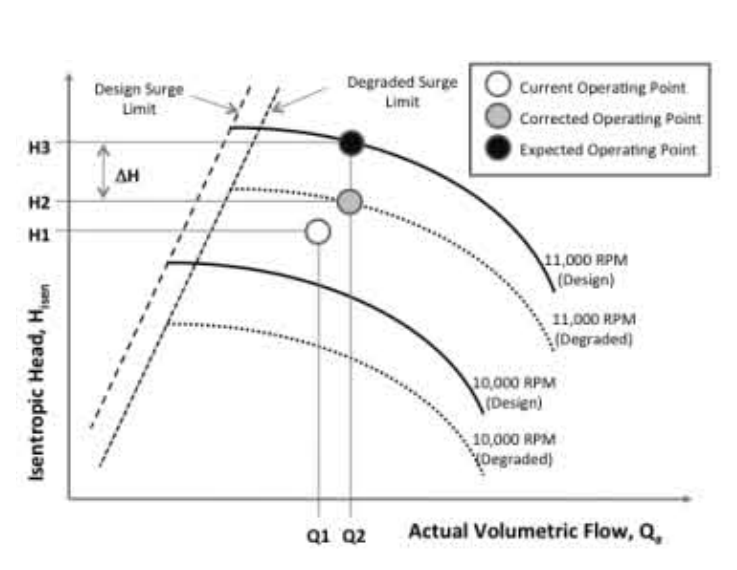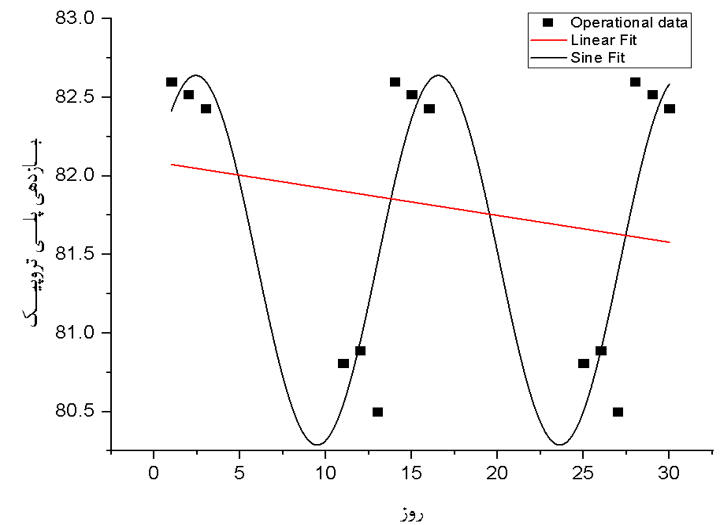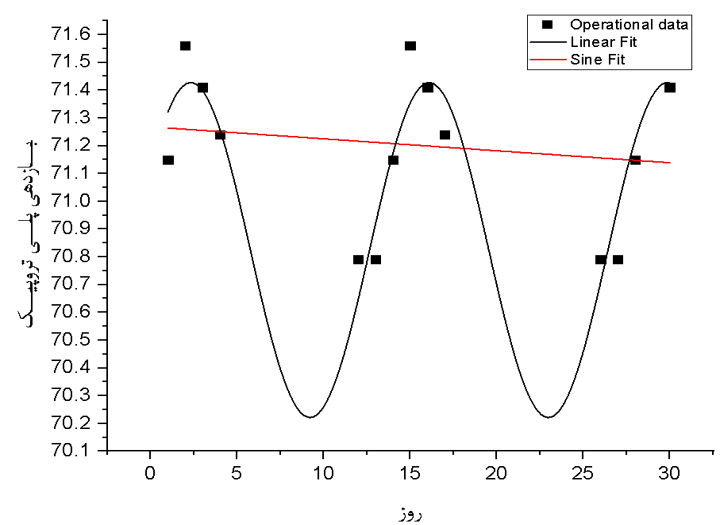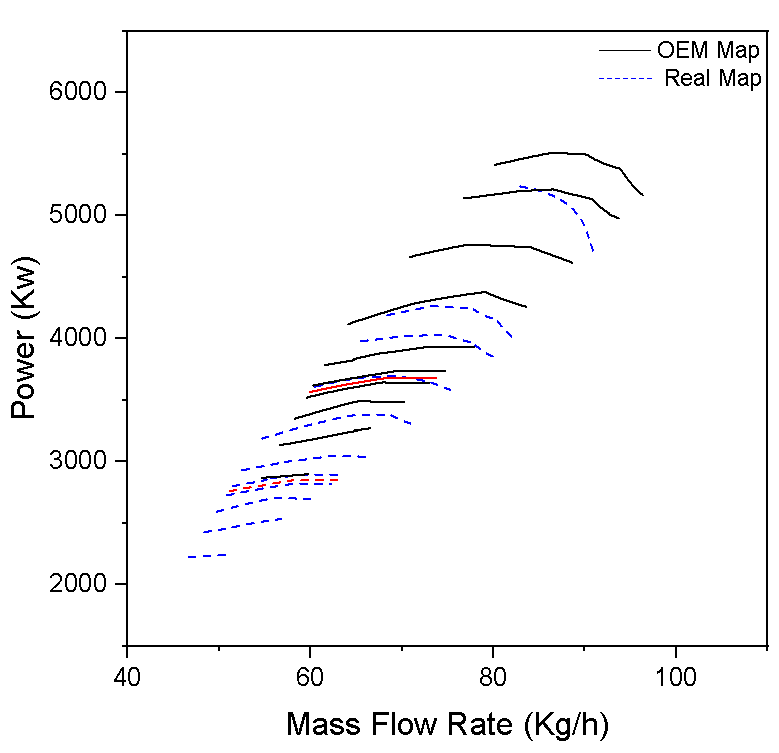Abstract
Numerous factors such as duct fouling, corrosion and wear of blades and internal return currents affect the performance quality and efficiency of the centrifugal compressor and can change vital variables such as pressure ratio, mass flow rate and energy consumption of the device that in turn affect the profitability and safety of the operating unit. In this study, the performance of compressor C-661 of Abadan Oil Refining Company, which is of centrifugal type with two operational stages and an intermediate cooling, has been investigated with the aim of evaluating its deviation from the manufacturer’s predicted conditions. Components that indicate the quality of compressor performance such as pressure ratio, mass flow rate, efficiency and power consumption have been measured. The results showed that this compressor after eight years of continuous operation, had a decrease of less than 1% of polytropic efficiency in the first stage and a decrease of nearly 4% of polytropic efficiency in the second stage. The average pressure ratio of the device has decreased by about 9% and the average mass flow rate has decreased by about 14% compared to the design point. The main cause of this decrease is the fouling of the device. The mechanical efficiency drop was close to 25%, which could be due to the decrease in steam turbine efficiency. Therefore, by using health coefficients, the performance diagram of this compressor was modified to show the current operating conditions and the overall equipment Effectiveness of the compressor was calculated with a new method. The economic survey also showed an 18% drop in productivity for the device.
The project results were published in the Mechanical engineering journal of the Iranian society of mechanical engineers (in Persian) for access to the article, project files, and any inquiries contact me.
The following is a personal recount of the project.
Project recount
I was presented with a variety of subjects to choose from for my master’s dissertation, but, due to my affinity to the petroleum industry, I wanted to do practical research that would solve immediate problems. Therefore, when I saw the Abadan oil refining company is looking to investigate deterioration of a centrifugal compressor, I jumped at the chance.

Utilizing my old network and after some negotiations, I managed to secure a contract for this research and gain approval of my professor and faculty members.
The work began shortly after, with my in depth research into compressor performance indicators, deterioration causes and effects, performance map correction, modeling and simulation of the process and most importantly, diagnostics and reliability maintenance. In my research I also came across total productive maintenance (TPM) and overall equipment effectiveness (OEE) descriptors. I read about 100 papers in preparation of the project.

I decided to use Aspen Hysys to model the performance of the compressor based on operational data and compare it with original equipment manufacturer (OEM) rated performance. Sounds simple and straight forward, I thought, but challenges soon appeared!
Firstly, I had never used Hysys and was not even aware of the software and its applications. This was easy to fix, however, since I am a fast learner and I enjoy learning new things. I installed and checked out the software tutorials and online resources for a while to get the hang of things. And found, in my network, people who had experience working with the software and were willing to lend a hand when issues popped up. Utilizing these resources I managed to learn the basic Hysys in quickly and without incurring any costs.

The second challenge was correction of performance maps provided by the OEM, since inlet and operational conditions differed from that of the tests. The operational data was gathered from central control unit and I worked closely with process engineers, chemical engineers and lab technicians to determine the gas composition. There were various methods for correcting the . I chose on in accordance to the limited time and resources available.

In the end, polytropic and mechanical efficiency drop as well as decrease in flow-rate, pressure ratio and profitability of the device were measured. A new method of calculating OEE for centrifugal, or in fact, dynamic compressors was developed which included pressure ratio.
The results indicated that the compressor is suffering from severe fouling and bearing degradation, based on the considerable loss of flow-rate and mechanical efficiency despite relatively acceptable polytropic efficiency loss. Both these issues were verified and remedied in the following overhaul.
This project seriously changed my view of the engineering job, as it was my first hands on real world experience. The fact that I managed to handle the project gracefully and to the satisfaction of all stakeholders really boosted my confidence. I Also managed to make new friends in the process and expand my network. I am grateful for all those who helped me in my endeavor.






